Red Wine Vinaigrette is such a simple salad dressing that you will absolutely love. Most of the ingredients are probably already in your pantry for this simple dressing.
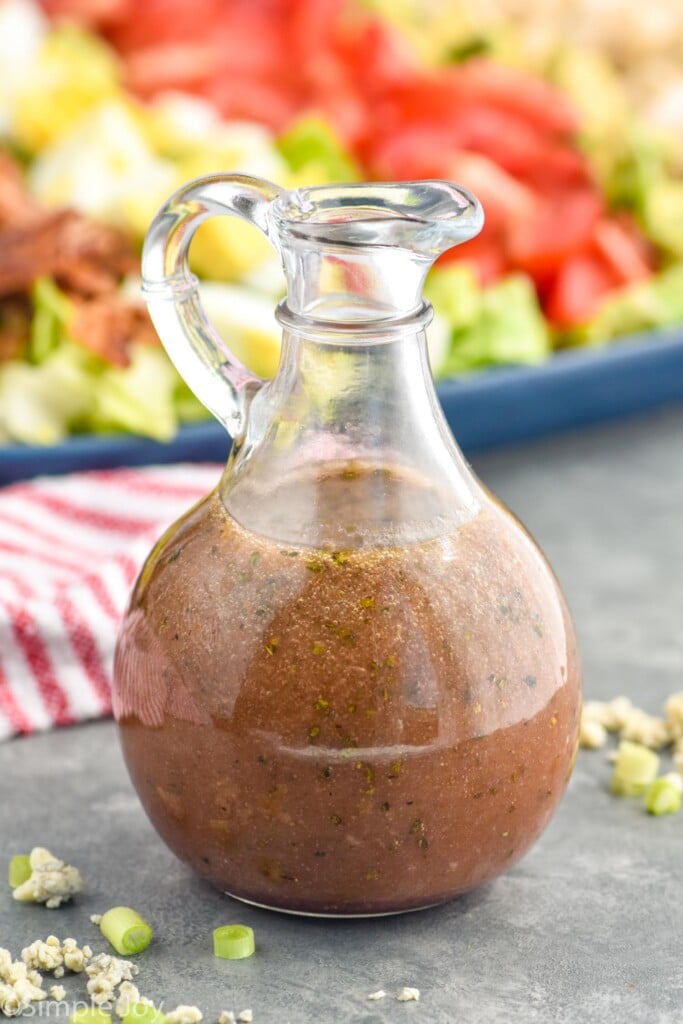
As you know, I love making my own salad dressings. So when I was coming up with my Cobb salad, I knew I needed to make a delicious dressing to go with it. Red wine vinaigrette is the one traditionally used, and it is such a simple recipe. This is a fantastic dressing for so many different types of salads.
You will love my tips and tricks for this recipe. Don’t miss the section on how to keep it from separating and how to make it a little lighter.
Red Wine Vinaigrette Ingredients
Here are the simple ingredients that make up the vinaigrette dressing. For the full list and their measurements, scroll to the recipe card at the bottom of the post.
- Red wine vinegar: A type of vinegar made from red wine that undergoes a fermentation process where bacteria convert the alcohol in red wine into acetic acid. The result is a tangy and flavorful vinegar with a distinctive red or deep amber color.
- Mayonnaise: Functions as an emulsifying agent, ensuring the vinegar and oil stay well-blended. Even if you’re not a fan of mayo, the amount used in this recipe is so minimal that it won’t affect the taste at all.
- Extra virgin olive oil: Opt for a high-quality extra virgin olive oil since it makes up the main portion of the dressing. Read more about this ingredient below.
- Dijon mustard: Adds a zesty flavor to the vinaigrette.
- Garlic cloves: Enhances the overall flavor of the dressing.
- Oregano: Dried herbs tend to combine into salad dressings better than fresh.
- Sugar: Counteracts the tanginess of the vinegar, adding just enough sweetness to enhance the flavor.
- Salt and pepper: Enhances and brings out the natural flavors of the other ingredients.
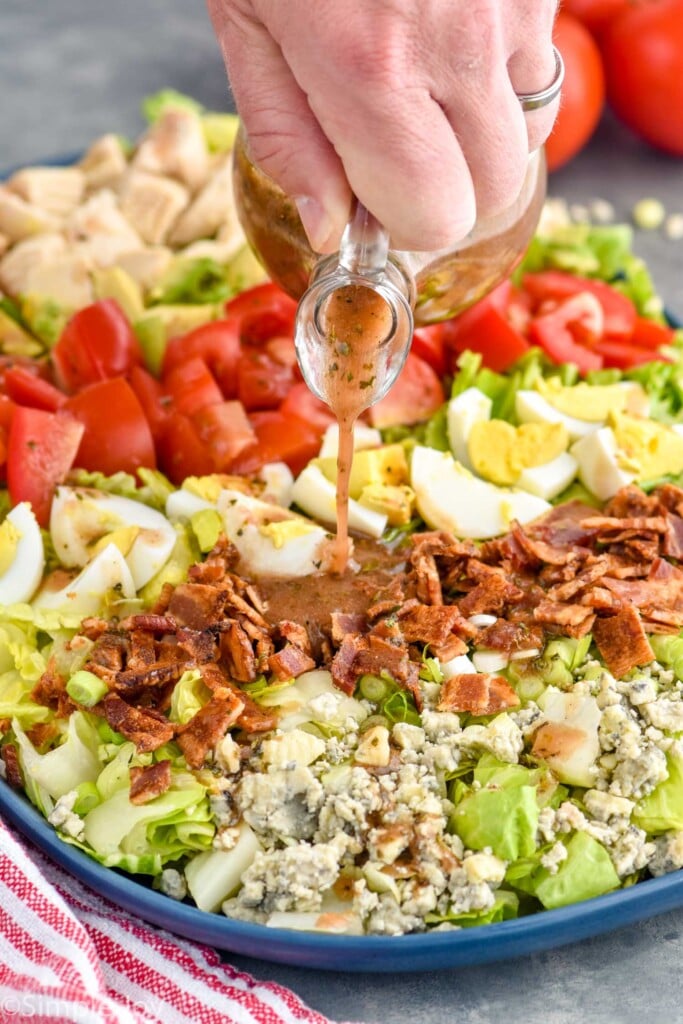
How to Make Red Wine Vinaigrette
Here is a brief overview of how this simple salad dressing comes together. For the complete recipe including all measurements, see the recipe card at the bottom of the post.
- Combine the red wine vinegar and the mayonnaise. Shake these up well to combine.
- Add the other ingredients. Shake or whisk well.
- Let the dressing rest. For best results, let the dressing sit overnight in the refrigerator for the flavors to combine.
Preventing Dressing From Separating
If the thought of homemade salad dressing separating keeps you from making it, here’s a fantastic hack for you.
Simply blend a small dollop of mayonnaise with the vinegar. The magic lies in mayonnaise acting as an emulsifier – a nifty chemistry trick that brings together the oil and vinegar, preventing any separation. It acts like a bridge.
While the mayo isn’t mandatory, it serves as a reliable binder without altering the flavor of the dressing. Additionally, it ensures your dressing remains well-integrated even when chilling in the refrigerator, preventing any unwanted solidification.
Olive Oil For Salad Dressing
With its superior taste and health benefits, extra virgin olive oil becomes the ideal candidate for salad dressings. It is less processed and more pure than other oils. Since it makes up the bulk of the base of this dressing, it is important to choose one that is good quality.
For cooking purposes, regular olive oil is preferred because it has a higher smoke point and won’t burn as easily. I like to keep both on hand in my kitchen.
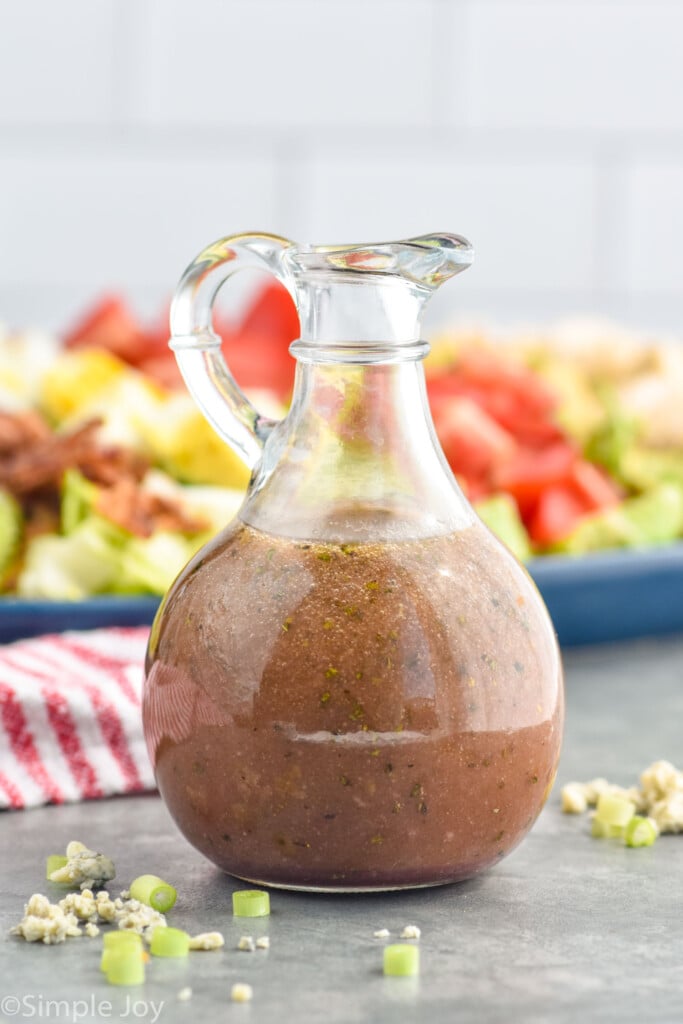
Letting Dressing Rest
While this salad dressing can be used right away, letting it sit overnight in the refrigerator to rest allows the flavors to really meld. This makes the flavor of the dressing even better.
How to Use Red Wine Vinaigrette
Not only can this dressing top your favorite salads (I love it on my Cobb salad), but it can also be added to wraps, pasta salad, or even used as a marinade for chicken.
Cobb Salad
Storing Vinaigrette
This red wine vinaigrette recipe is best made the day before so it has time to rest and for the flavors to combine. It can be stored for up to four days in the refrigerator in an airtight container. All homemade salad dressings should be stored in the refrigerator, even if they don’t have mayonnaise. Give it a good shake or whisk the dressing before adding it to your salads. Remember to use your best judgment– if a dressing looks, smells, or tastes off, it’s best to err on the side of caution and prepare a fresh batch.
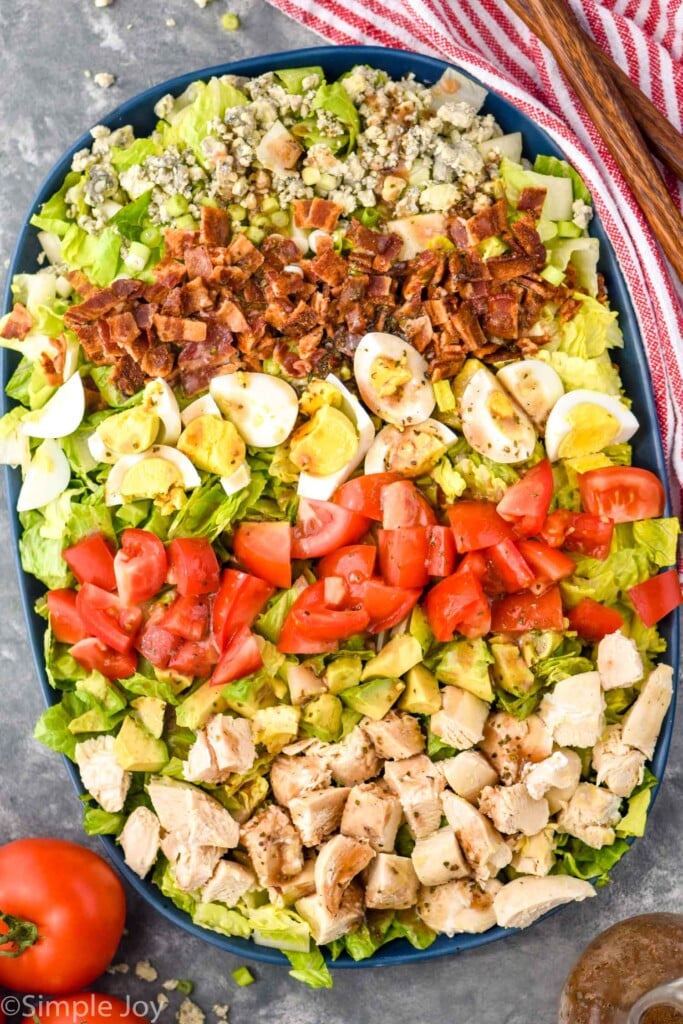
Other Homemade Salad Dressings
Once you dive into crafting your own dressings, I guarantee you won’t go back to grabbing those store-bought bottles! The homemade versions are not only ridiculously easy but also downright delicious. Here’s a peek at a few of my absolute favorites:
Let me know what you think of this red wine vinaigrette recipe by leaving a comment below! Hearing from you makes my day.
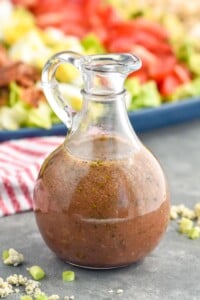
Red Wine Vinaigrette
Ingredients
Red Wine Vinaigrette
- 2/3 cup red wine vinegar (157.72 ml)
- 2 teaspoons mayonnaise optional (read above about how mayonnaise prevents dressing from separating)
- 1 cup extra virgin olive oil (236.588) (read above about why extra virgin olive is best for salad dressing)
- 1/2 tablespoon Dijon mustard
- 2 garlic cloves finely minced
- 2 1/2 teaspoons kosher salt (if using table salt, start with half this amount)
- 2 teaspoons oregano
- 2 teaspoon sugar
- 1/4 teaspoon black pepper
Instructions
- Whisk together the red wine vinegar and the mayonnaise.2/3 cup red wine vinegar, 2 teaspoons mayonnaise
- Add in the other ingredients and shake or whisk well. For best results, let the dressing sit overnight. (Read more about this here.) After using, store the leftover dressing in the refrigerator for up to four days.1 cup extra virgin olive oil, 1/2 tablespoon Dijon mustard, 2 garlic cloves, 2 teaspoon sugar, 1/4 teaspoon black pepper, 2 teaspoons oregano

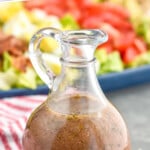
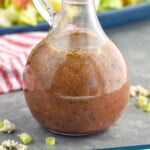
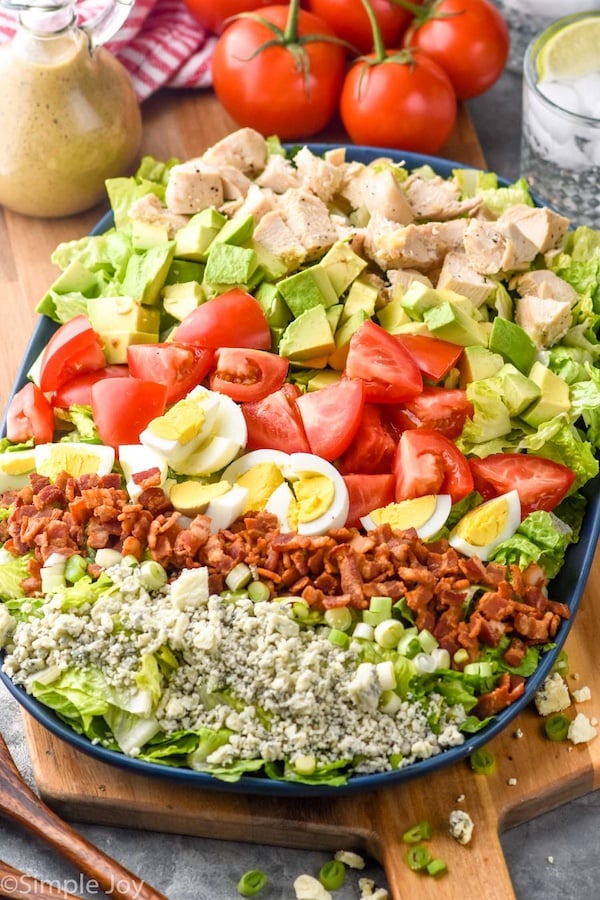
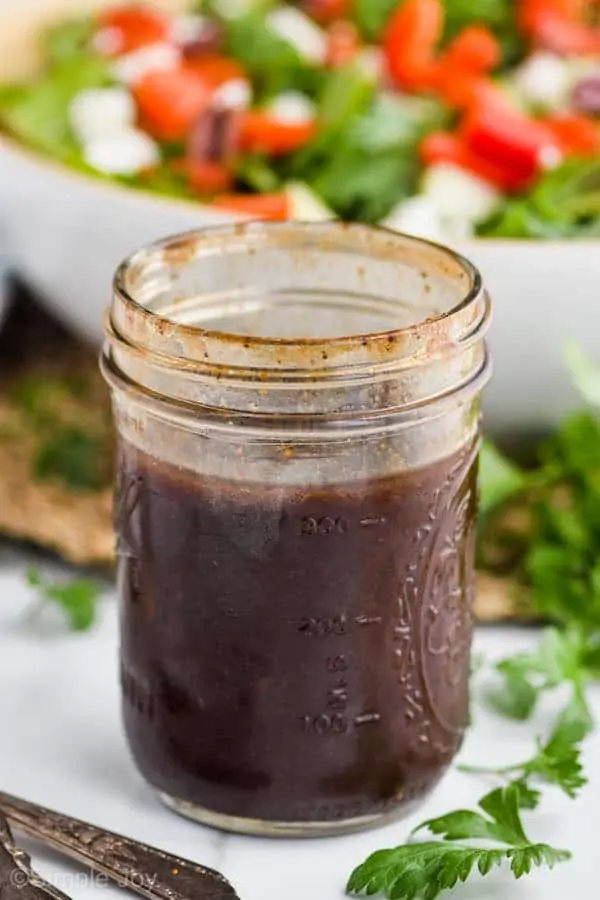
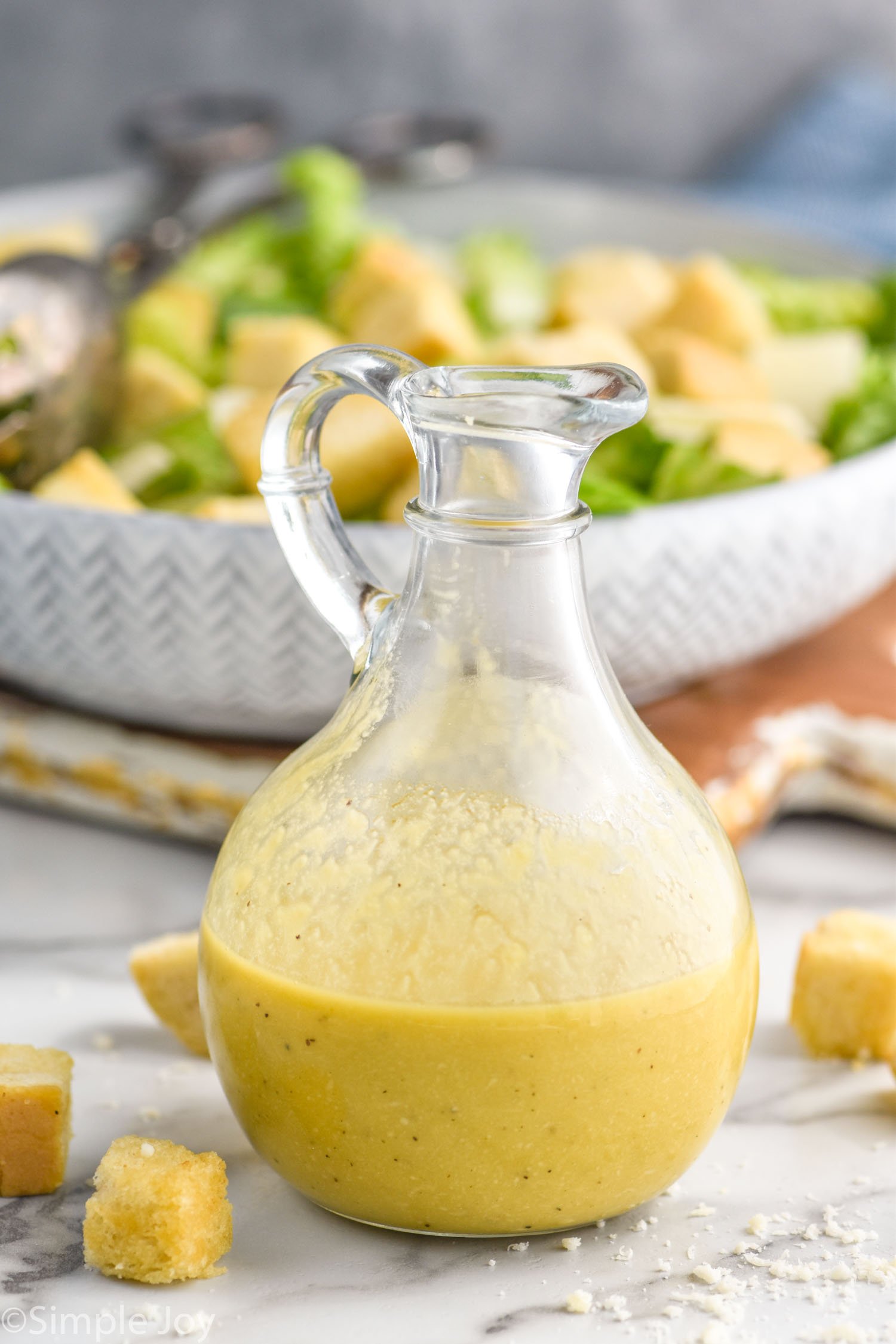
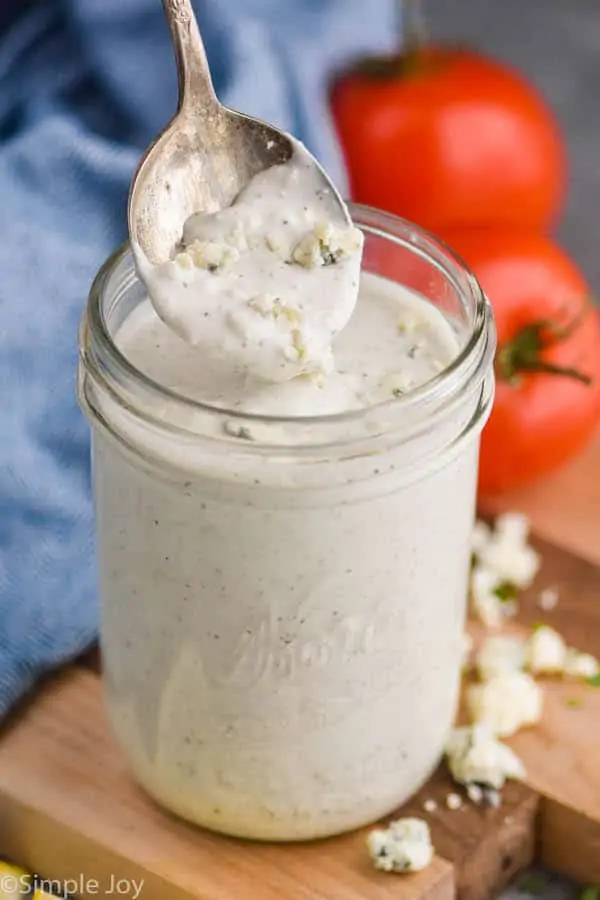
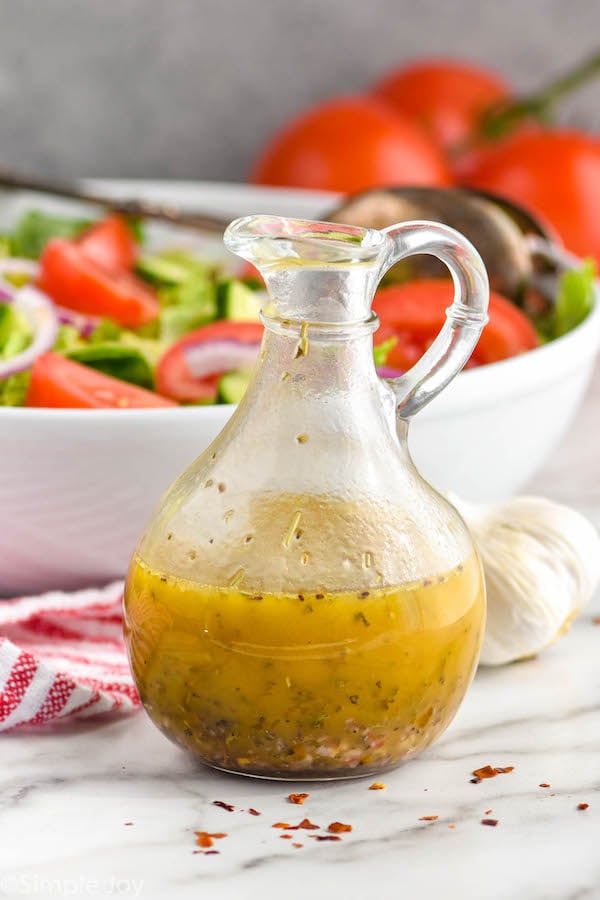


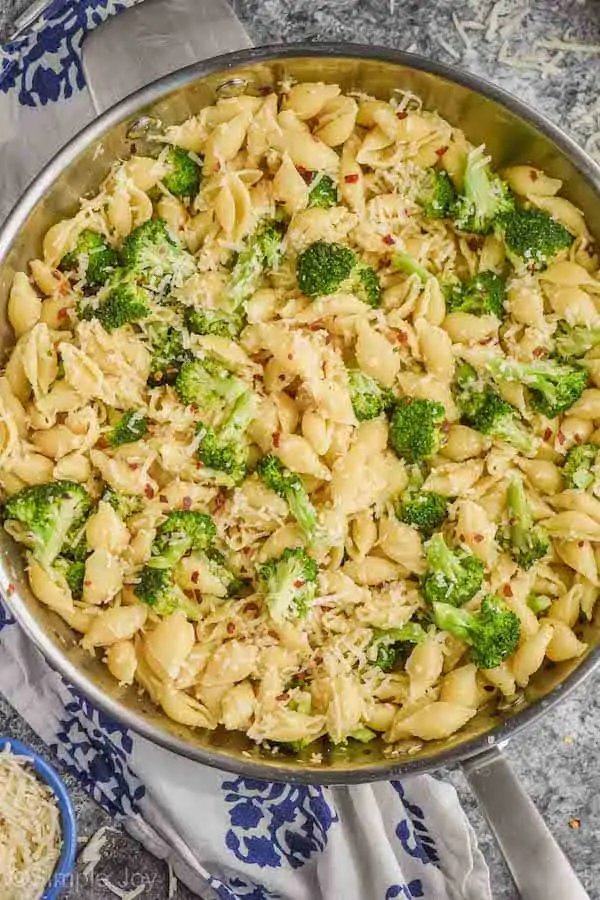
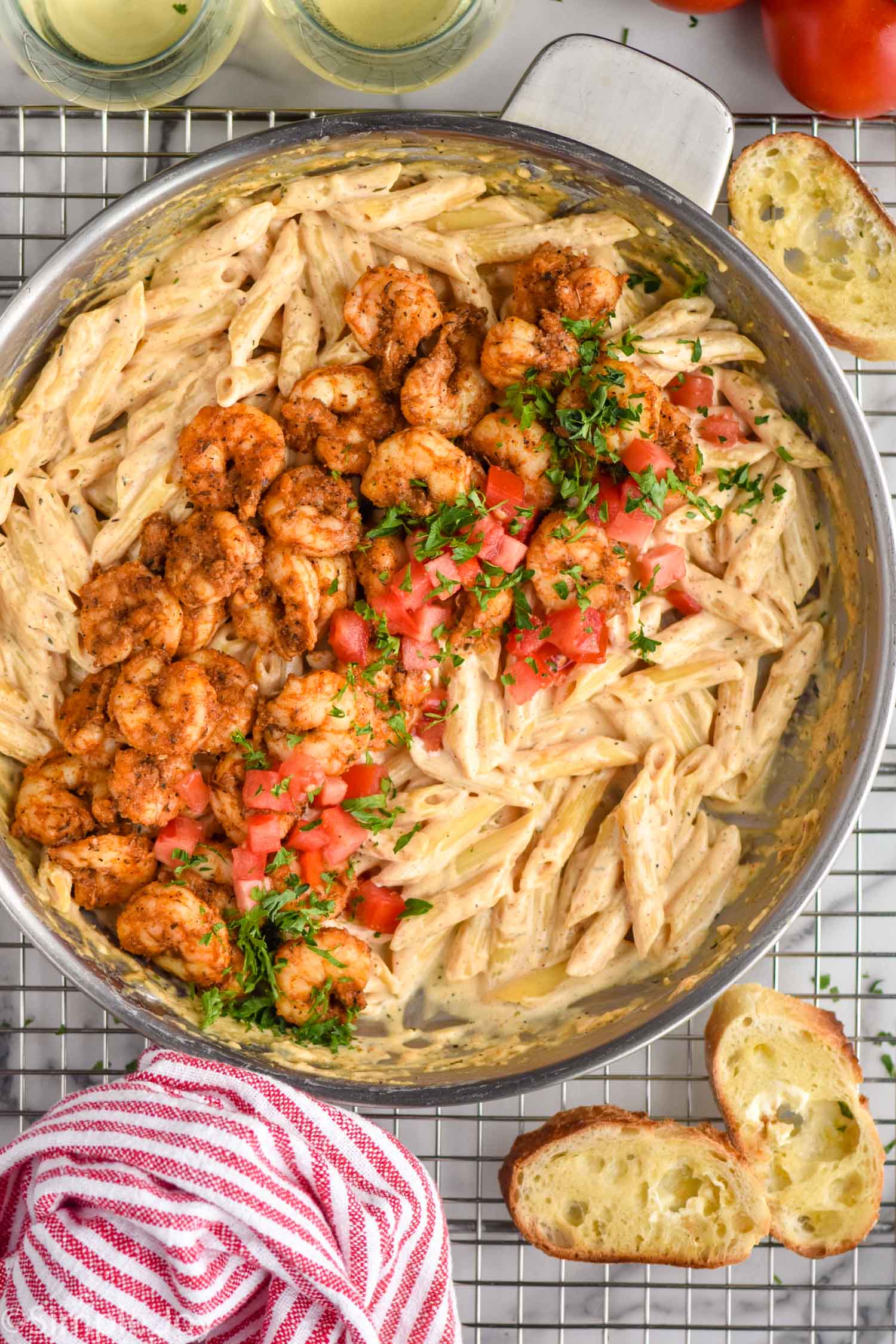
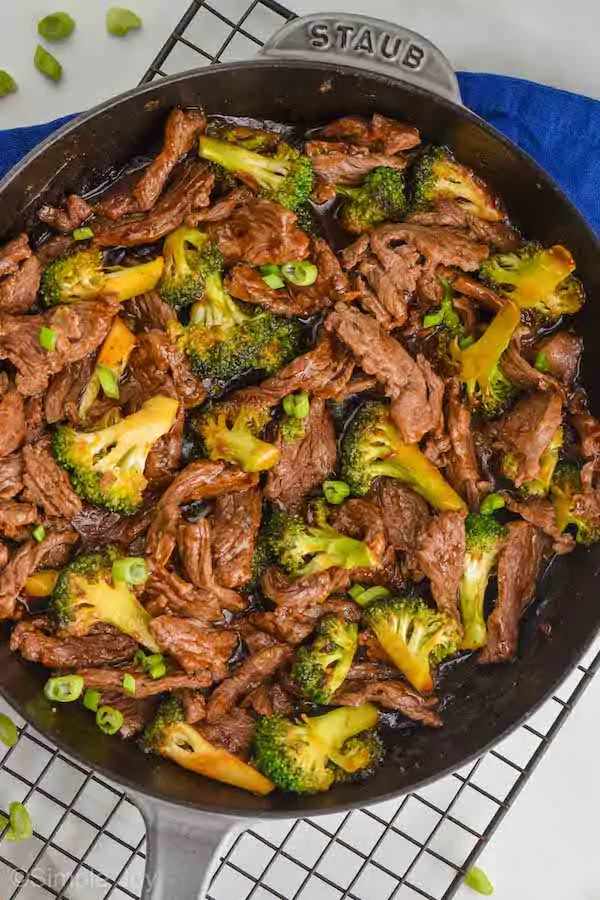






ann says
Delicious, easy and inexpensive! Even better the next day. I used maple syrup instead of sugar. I was lazy and didn’t want to mince garlic so I left it out. Still good.
I’m so glad you liked it as much as me!